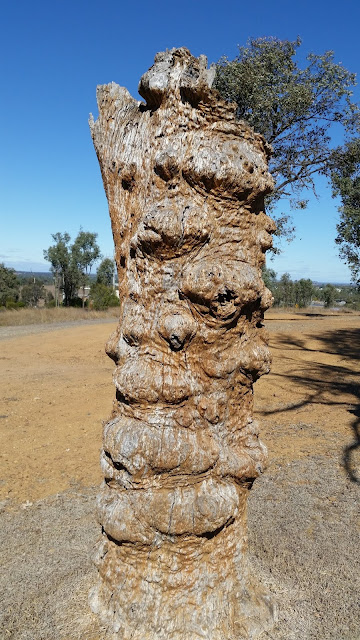This is just a rest area on the side of a busy road but it's worth stopping by to see the Bimble Box Tree, commonly known as a Knobby Tree for obvious reasons. Unfortunately, the one here is in poor condition. We did see a much healthier specimen growing on the side of the road but it was not worth the risk of pulling up with a van on the back to have a closer look. Keep an eye out for it on the way to Gayndah, about 4.5 km from this park on the left hand side.
 |
| Bimble Box Tree / Knobby Tree / Poplar Box Eucalyptus populnea |
 |
| Artwork at the entrance to Jaysee Park |
Details for Jaycee Park, Mundubbera:
Where: On the Burnett Highway about 2.5 km north-east of Mundubbera.
Camping: 20 hour rest area.
Facilities: Toilets, pets, water, picnic tables, phone, TV and WiFi reception, information signs, play ground,views. No longer has showers.
Of interest: The Bimble Box Tree.
Cautions: $5,500 fine for staying longer than 20 hours in every four week period.
Nearby National Park: Auburn River National Park, 41 km.



